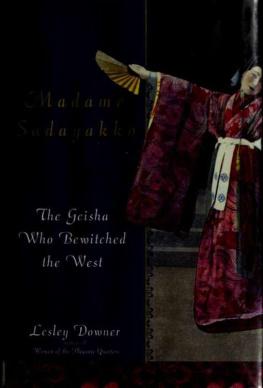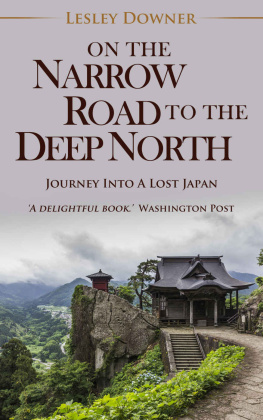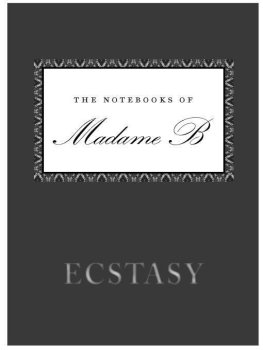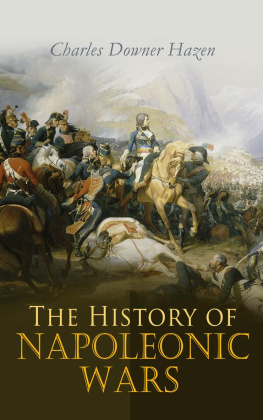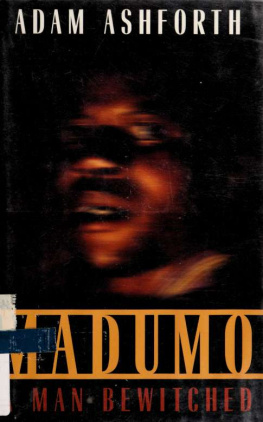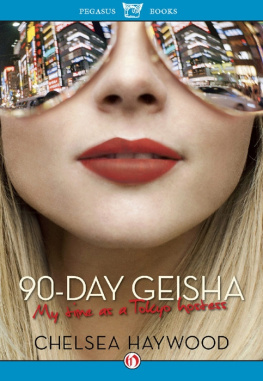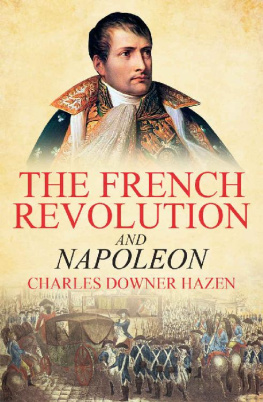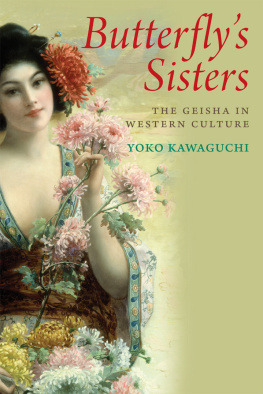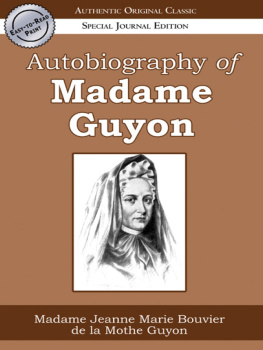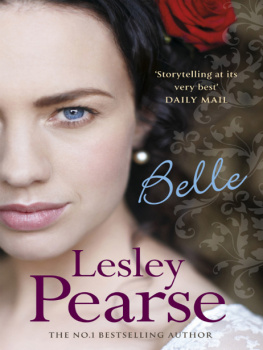Lesley Downer - Madame Sadayakko: The Geisha Who Bewitched the West
Here you can read online Lesley Downer - Madame Sadayakko: The Geisha Who Bewitched the West full text of the book (entire story) in english for free. Download pdf and epub, get meaning, cover and reviews about this ebook. year: 2003, publisher: Gotham Books, genre: Non-fiction / History. Description of the work, (preface) as well as reviews are available. Best literature library LitArk.com created for fans of good reading and offers a wide selection of genres:
Romance novel
Science fiction
Adventure
Detective
Science
History
Home and family
Prose
Art
Politics
Computer
Non-fiction
Religion
Business
Children
Humor
Choose a favorite category and find really read worthwhile books. Enjoy immersion in the world of imagination, feel the emotions of the characters or learn something new for yourself, make an fascinating discovery.
- Book:Madame Sadayakko: The Geisha Who Bewitched the West
- Author:
- Publisher:Gotham Books
- Genre:
- Year:2003
- Rating:3 / 5
- Favourites:Add to favourites
- Your mark:
- 60
- 1
- 2
- 3
- 4
- 5
Madame Sadayakko: The Geisha Who Bewitched the West: summary, description and annotation
We offer to read an annotation, description, summary or preface (depends on what the author of the book "Madame Sadayakko: The Geisha Who Bewitched the West" wrote himself). If you haven't found the necessary information about the book — write in the comments, we will try to find it.
Madame Sadayakko: The Geisha Who Bewitched the West — read online for free the complete book (whole text) full work
Below is the text of the book, divided by pages. System saving the place of the last page read, allows you to conveniently read the book "Madame Sadayakko: The Geisha Who Bewitched the West" online for free, without having to search again every time where you left off. Put a bookmark, and you can go to the page where you finished reading at any time.
Font size:
Interval:
Bookmark:
This book made available by the Internet Archive.






To the memory of my parents, fiordon and jCiluin r Dovoner
-
Acknowledgments
By the time I began my research, Sadayakko's daughter, Tomiji, was too old and ill to meet me. Her granddaughter, Hatsu Kawakami, together with Hatsu's son, Shinichiro, generously shared time and memories with me and showed me her precious collection of photographs and souvenirs. Hatsu ensured that I was warmly received at Teishoji Temple. Otojiro's cousin's grandson, Hiroshi Kawakami, who continues the Kawakami family line, welcomed me into his home in Hakata, and I spent a fruitful afternoon with Momosuk's grandson, Kakumasa Fukuzawa. It was a great excitement and privilege for me to meet them all.
Thanks to Saketa-san at Teishoji Temple and Masao Okumura, who showed me around the Garden of Evening Pines in Unuma. In Midono, Takashi Toyama was full of expertise and enthusiasm and took me to the Momosuke* Memorial Museum, Oi Dam, and several of Momosukes Art Deco power stations. Thanks also to Ryokichi Matsusei for his memories of Sadayakko and the staff of Nagiso Town Office for providing introductions. Mr. Yasuda of the Nagoya City Office shared his knowledge of Futaba Palace. Thanks to Fumi Noguchi of the Fukuoka City Museum, who organized a wonderful exhibition on the Kawakamis at the 1900 Paris Expo and introduced me to Koh Egashira, author of the most up-to-date biography of Oto-jiro. In Tokyo, thanks to the owner of Hamadaya and to Hisamatsu and Hiro of the Yoshicho geisha community.
I would also like to thank Junichi Yano of the Foreign Press Center in Tokyo, who gave me help far beyond the line o( duty and came up with all sorts o{ extraordinary information. He tracked down Hatsu and pointed me toward Ito's birthplace, among much else. Keiichiro Asari, author of a recent biography of Momosuke, introduced me to Kakumasa.
Jun Kanai of Issey Miyake International introduced me to Akiko Fukai of the Kyoto Costume Institute, where I handled the only surviving Yakko kimono (wearing white cotton gloves). Nancy Knox introduced me to Issey Miyake, who gave encouragement and materials on Sadayakko's connections with fashion. Michiyo Sato, the
x Sicknovoledflments
Isadora Duncan dancer, was full of inspiration and introduced me to the dance scholar Kazuko Kuniyoshi.
Hiroaki Sugita, recently retired from the Kyoto Shimbun newspaper and author of many scholarly works, first drew my attention to Sadayakko and lent me a book about her, from where my fascination grew.
Of the several biographies of Sadayakko in Japanese (listed in the bibliography), Hatsu commended Actress Sadayakko by Reiko Yama-guchi as the most accurate. I made much use of Nobuo Shirakawa s magnificently comprehensive collection of clippings covering Sadayakko s and Otojiro's careers to the end of Otojiro's life. There is also a scrapbook of clippings at Teishoji Temple, which, to my joy, turned out to cover Sadayakko's later years.
I could never have made use of any of this material without my trusty readers, who plowed through acres of archaic Japanese and put it into English for me. Chieko Tsuneoka, my longtime friend and ally, gave up evenings and weekends to pore over barely legible photocopies of hundred-year-old press clippings. She shared my adventure with me, taking a weekend out to travel to Teishoji Temple. Midori Hanabusafar too brilliant to be doing such workdeciphered hundreds of pages of ancient press clippings at amazing speed and also read Otojiro's diaries. This book would not exist without their help. Tomomi Sherlock, Naoko Takayama, and Sara Roche in Tokyo and Satoko Shimazaki in New York also provided sterling help with translation.
The small but enthusiastic community of Sadayakko scholars generously shared their knowledge with me. Ayako Kano sent me the manuscript of her Acting like a Woman in Modern Japan, the only book on Sadayakko in English. J. Scott Miller loaded me down with materials and gave me a recording of the Kawakami troupe, which he had unearthed in Cambridge. It was thrilling to hear the troupe twanging their shamisens and speaking to me from a hundred years ago while driving across Utah in a rainstorm. Professor Peter Pantzer, my generous host in Bonn, not only shared the results of his formidable researches but took me on a boat ride up the Rhine. Thanks, too, to his excellent assistant, Nicole Zingsheim. Yoko Chiba shared much material. And in Kyoto I had an entertaining and informative dinner with Jonah Salz, whose seminal work, lntercultural Pioneers: Otojiro Kawakami and Sada Yakko, formed the backbone for my research.
s^/iihiiowLiLfnunts d
PtofcssOl I kem i letltlc ol the S< 1 h < 1 oi C )nental and Atm em s "ul
k-s in London kindlj read die fir* draft and gave me tlu benefit of hia !Mi mi knowledge ol Japanese theatei and the floating world (though all mistakes, ol course, are m\ own). I lain Browne, Elizabeth Hand Dea Birkett, and Scott Millet also read the first dr.it i and contributed
valuable suggestions.
1 bad great tun discovering the resources ol excellent libraries
around the world. In Japan 1 used the Tokyo Central Library in Hiroo
and the Waseda Theater Museum and International 1 louse libraries;
in Pans, the Bihliotheque de l'Arsenal; in London, the School of Oriental and African Studies' library, the Theater Museum, the British Library including the National Newspaper Library, Colindale, and the Westminster Public Libraries; in New York, the New York Public Library and the Bobst; and in Chicago, the Chicago Historical k ety. Thanks also to Ria Koopmans-de Bruijn o{ the C. V. Starr East Asian Library at Columbia University.
Profound thanks to my editor, Lauren Marino, for encouragement, brilliant suggestions, friendship, and fun, and to everyone at Gotham Books. I am most fortunate in having a wonderful agent, Bill Hamilton of A. M. Heath in London, who was, as always, there all the way through the project, giving wise advise and support. My agent in New York, Ellen Levine, also provided wonderful support and was a staunch ally.
Thanks to picture researcher Emma Brown for taking a weight off my shoulders; to John Richardson and Marilyn McCully; and to Emma Page at James Roundel for helping me track down pictures. Many thanks to Pieter C.W.M. Dreesmann for permission to use the Picasso pastel in his collection.
Lastly, thanks to my brother and sister-in-law, Geoff and Clare; my nephews, Christopher and James; my recently discovered extended family in Canada, the Chans, Chins, Aitkens, and others; and to my supportive network o( friends in London, New York, and Tokyo who continue to be my friends despite my regular disappearances for months on end and refusal to take phone calls while working.
Note on Pronunciation
Japanese words are prom >uiu ed as they are spelled, with each tyllable distinct and with clean vowels and nonaspirated Consonants, rathei
Next pageFont size:
Interval:
Bookmark:
Similar books «Madame Sadayakko: The Geisha Who Bewitched the West»
Look at similar books to Madame Sadayakko: The Geisha Who Bewitched the West. We have selected literature similar in name and meaning in the hope of providing readers with more options to find new, interesting, not yet read works.
Discussion, reviews of the book Madame Sadayakko: The Geisha Who Bewitched the West and just readers' own opinions. Leave your comments, write what you think about the work, its meaning or the main characters. Specify what exactly you liked and what you didn't like, and why you think so.

